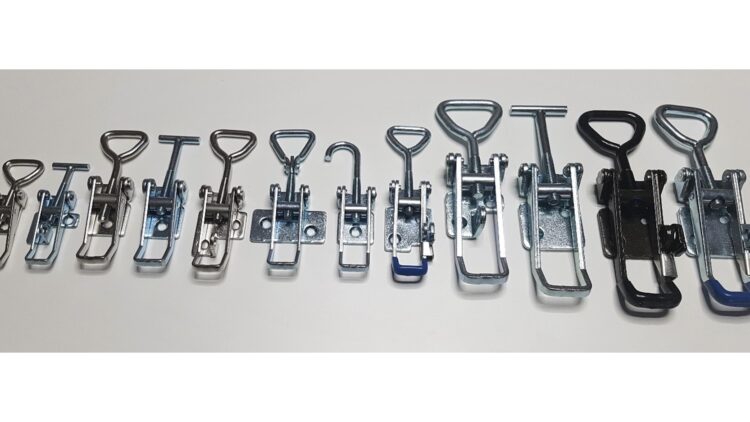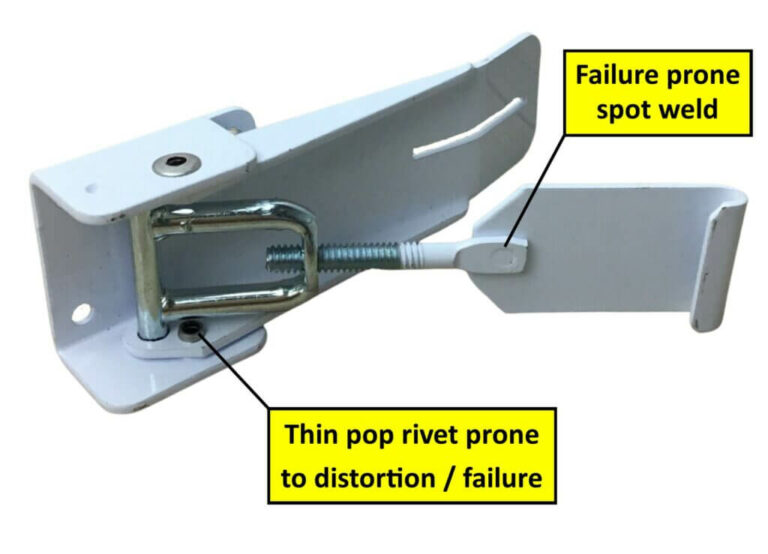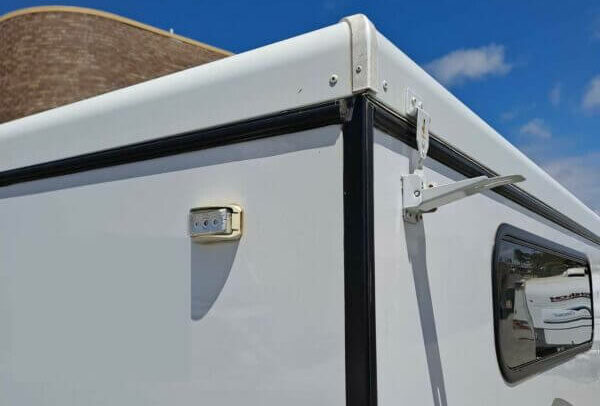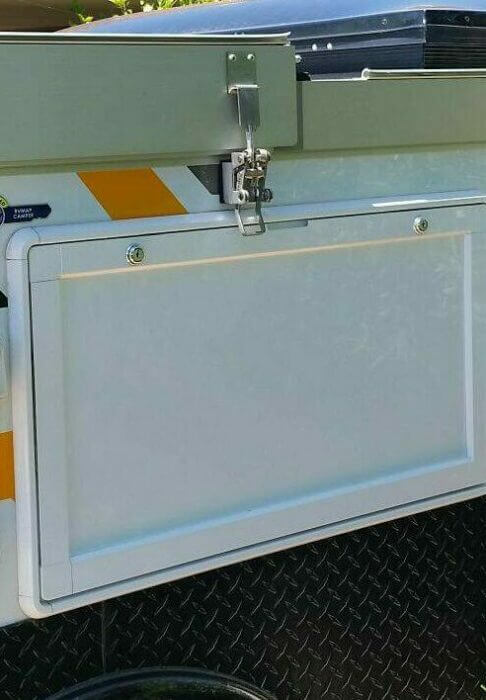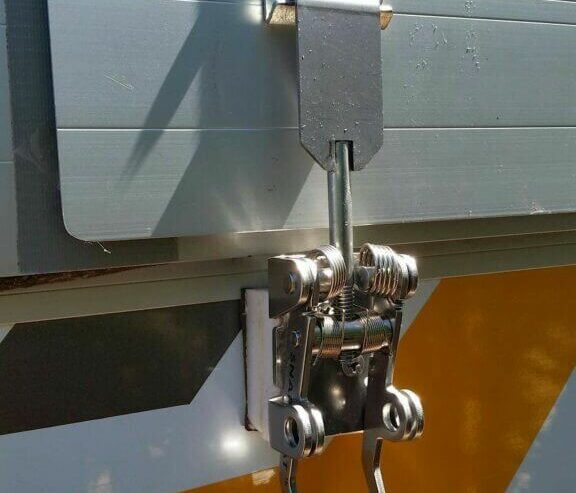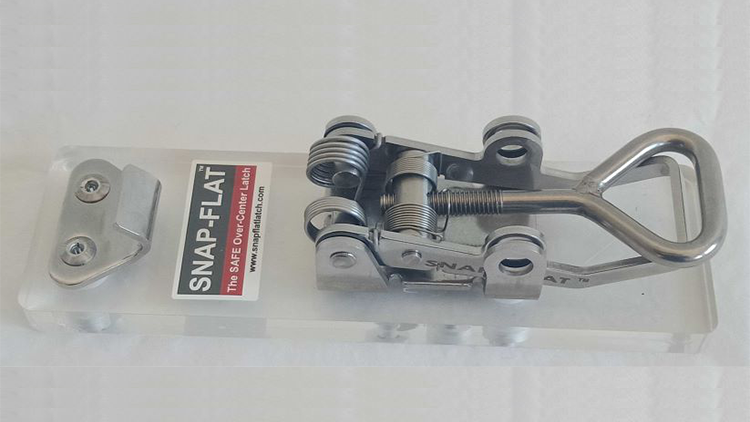Selecting the Correct Over Centre Latch for Your Application
With so many different sizes, materials, designs, and styles, how do you choose the right over centre latch (or known as toggle latch) for your requirements?

1. Stationary vs Moving Applications
The first consideration should be to ascertain if the application for the over centre latch is ‘stationary’ or ‘moving’. If the item is stationary then safety is probably not a major factor with regard to which latch is right and other factors such as the size, style and finish (zinc coated, painted and stainless steel) will determine which over centre latch you should buy.
If, however, it is important or imperative that the latch CANNOT decouple when in use, such as on a moving vehicle, then a ‘SELF-CLOSING’ latch, such as the Snap-Flat latch should always be used.
2. Load Rating / Ultimate Tensile Strength
The next most important requirement is ensuring that the over centre latch has sufficient strength for your application. Again, for stationary application this is usually not particularly important however for moving applications where safety is often critical, you do not want your latch breaking.
As a rule of thumb, the ultimate tensile strength (UTS) or load rating of your latch should be twice the maximum load expected. Well made over centre latches will state the UTS or load rating in their specifications.
It they are not available then the latch has not been tested and you are buying an unknown quantity that could result in you latch failing with potentially disastrous consequences. Don’t be fooled by a latch’s appearance. A poorly designed latch can appear strong on initial inspection but have a fatal weak point
Similarly, the catch plates (hooks) must be of an equivalent strength to the latch as also the method of securing or fastening the latch and catch plates. No point having a strong latch for the catch plate or fasteners to fail.
Based on their strength, industrial over centre latches can be divided into 4 broad categories:
Light duty: Designed for applications where there is little force or load, typically less than 125kg. They are mainly used for stationary objects like cabinets and boxes that are not subject to vibration or regular movement. They are typically small, easy to use and very affordable.
Medium duty: Designed for applications with a maximum load between 125 to 750kg. The extra strength can ensure they do not accidentally open or fail due to vibrations. Common applications include transport boxes or cases, toolboxes and industrial cabinets. For ‘moving’ applications, if the latch accidently dis-engaging is of a concern, a ‘self-closing’ latch such as the Snap-Flat latch should be considered.
Heavy duty: Designed for applications with a maximum load between 1,000 kg to 2,500 kg. Common applications include large transport containers or crates, industrial machinery covers, vehicle & engine bodies. For these applications, safety is paramount, and the failure of a latch could have catastrophic results and a ‘self-closing’ latch such as the Snap-Flat latch should be used.
Super heavy-duty: Designed for applications with a maximum loads exceeding 2,500kg. Applications include some heavy duty trailers and motor vehicles, such as trucks and rail carriages. For these applications, safety is also paramount, and the failure of a latch could have catastrophic results and a ‘self-closing’ latch such as the Snap-Flat latch should be used.
3. Available Space
The type of latch you choose may be dictated by the available space or ‘real estate’ you have for installing the latch and its catch plate. For example, some boxes or toolboxes have limited space and hence only a small sized latch can be used. Make sure you have measured the space available and that this will be adequate to accommodate you latch in it shortest and longest configurations.
4. Lockability
Some Over Centre latches include provision to be locked using either a padlock or a safety catch. Both options will prevent the latch accidently opening. The padlock option, while less convenient, also enables you to protect your items.
As well as including a padlock able feature, the Snap-flat latch also prevents the latch accidently dis-engaging when the over centre position has been lost. Latches with the safety catch feature are not always reliable due to manufacturing tolerances, resulting in the catch feature not working.
5. Reducing Latch Damage
Some applications can result in the latches being frequently damaged. This can occur because the latch handle and arm are loose and flap around when not engaged. Consequently, they can catch on other objects, including humans, or get crushed when collapsing a container or crate. A ‘self-closing’ latch such as the Snap-Flat latch prevents this by securing the latch handle and arm when they are not engaged.
6. Corrosive Environments
Over Centre Latches are commonly available in mild steel, zinc coated steel and stainless steel (304 and 316). The material used will affect the latches strength and durability. For corrosive environments stainless steel over centre latches should be considered.
7. Appearance
Cosmetic appearances can be important for some users and applications. For example if you have an expensive pop top caravan you may not like having a cheap, zinc coated over centre latch that is prone to corrode.

